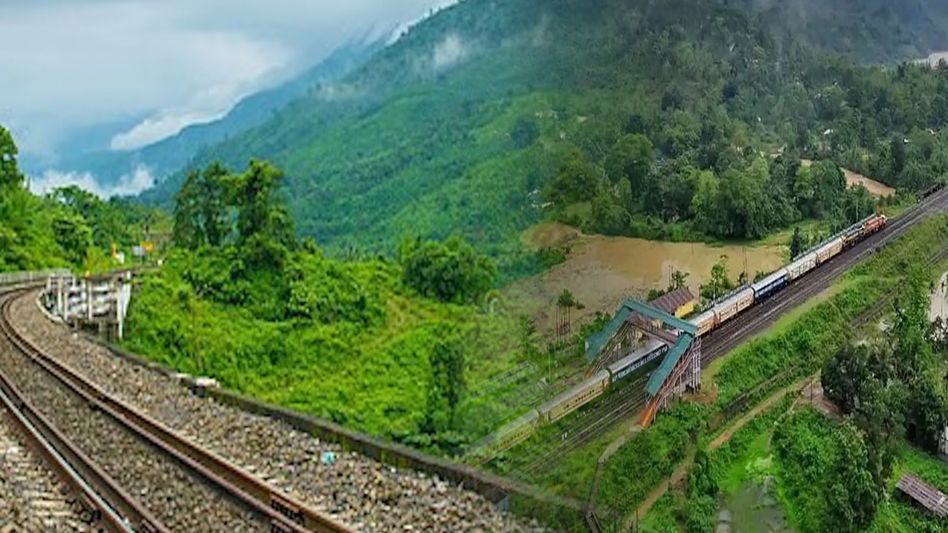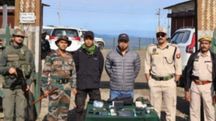Rs 55 crore compensation ‘paid’ on paper, but beneficiary records go missing
Assam’s Lumding-Silchar railway project displaced villagers who lost farmlands and homes during 2002-2014 construction. Despite official claims of Rs 55 crore compensation, several families allege they received nothing. Official records were mysteriously “lost” and after two decades, villagers wait for promised compensation.

When former Union Railway Minister Suresh Prabhu flagged off the first broad gauge goods train on the Lumding–Silchar route on March 27, 2015, it was hailed as a historic moment for Assam’s northeast. The ceremony symbolized progress, connectivity, and economic opportunity for remote regions long cut off from India’s railway network.
But for villagers like Ropojit Johori from Natun Simplangdisa, that moment of celebration has turned into a decade-long nightmare of broken promises and bureaucratic betrayal.
The Lumding–Silchar section represents one of India’s most challenging railway projects. Carved through the steep hills of Dima Hasao, the route required extraordinary engineering: 21 tunnels, including the massive 3.2-kilometer Tunnel No. 10, and 79 bridges, crowned by the imposing 54-meter-high Dayang Bridge.
Engineers battled frequent landslides, unpredictable geology, and hostile weather to complete the project. But while the railways celebrated their technical triumph, villagers in Maibang Revenue Circle watched their lives being systematically destroyed.
During construction between 2002 and 2014, farmlands disappeared under cutting spoils, orchards were washed away by excavation-triggered landslides, and homesteads vanished beneath railway tracks. Government records show these families were duly compensated. The reality on the ground tells a different story.
“We didn't receive a single penny,” says Ropojit, whose name appears on official compensation lists. “We went from door to door seeking help. Authorities only gave us assurances, but no action.”
The scale of the alleged compensation failure is staggering. According to Northeast Frontier Railway, it acquired around 462 hectares of land in Dima Hasao and paid Rs 55 crore in compensation. An additional Rs 6.46 crore was recommended in 2016 for 11 affected villages, with Rs 1.78 crore reportedly released for housing and structures through the Deputy Commissioner’s office.
Yet families like that of Purandal Langthasa, who should have received Rs 7,23,100 for lost property and land, claim they never saw a rupee. “We gave our land because officials promised us compensation," says Langthasa. "Now, for 20 years, we wait like fools.”
The RTI battle
Frustrated by years of inaction, Mairing Johori, President of the All Dimasa Students Union Central Committee, filed a Right to Information request on April 18, 2022. He sought answers about why affected families remained uncompensated despite losing property during the gauge conversion.
What followed was a bureaucratic maze that exposed systemic failures. The Dima Hasao Autonomous Council, the constitutionally created body governing the district under the Sixth Schedule, eventually provided a beneficiary list. But this covered only Rs 7.11 crore of the total Rs 55 crore released by railways.
When pressed for complete records, council officials delivered a stunning admission: the detailed payment records had been “misplaced while shifting office and could not be traced out.” After sending a letter to railway authorities on December 29, 2023, requesting the beneficiary list, the council made no follow-up efforts for over a year. On being nudged by Assam Information Commission, it sent another letter on February 7, 2025.
The compensation process reveals a deeper problem: villagers weren’t even aware they were being assessed. Families identified for compensation, as mentioned in RTI responses from the Dima Hasao Council, had “no clue” about the assessment process. “The families were kept in the dark,” explains Mairing Johori. “They didn’t even know their lands were being assessed for the railway project, let alone compensation.”
The official silence
Attempts to get answers from responsible officials reveal a culture of deflection and denial. Additional Secretary Revenue Uttam Daulagupu claimed he wasn’t authorized to comment. Principal Secretary-in-Charge Rajit Karigapsa redirected queries back to Daulagupu, and then suggested only Chief Executive Member Debolal Garlosa could speak on the matter.
Multiple calls and messages to Garlosa went unanswered.
A decade after the fanfare of steel and smoke, the Lumding–Silchar line stands as a symbol not just of engineering grit, but of promises unkept. For villagers like Johori and Langthasa, the trains that thunder through their former farmlands serve as daily reminders of what they lost, and what they're still waiting to receive.
Copyright©2025 Living Media India Limited. For reprint rights: Syndications Today









